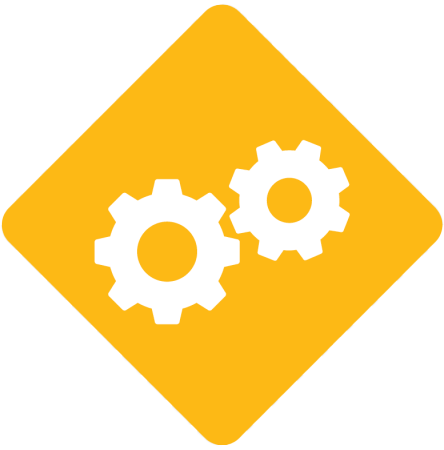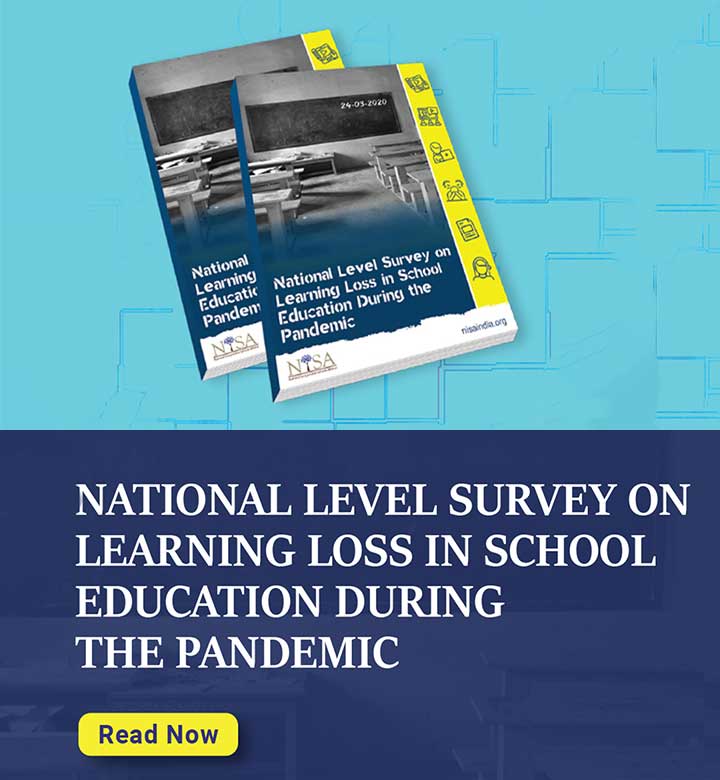NISA India has been working for the accessibility and advocacy of quality education since 2010 and we believe in education for all. To take it further, we decided to assess learning loss amongst school students of 3rd, 5th and 8th grade during COVID-19 on a national level. The objective of this research is to understand and identify the learning gaps that occurred in this pandemic.
School closure due to the COVID-19 has led to complete disconnect from education for the vast majority of children or inadequate alternatives like community-based classes or poor alternatives in the form of online education, including mobile phone-based learning. This disconnect along with academic regression led to massive amounts of trauma in students, so one of our other aims was to evaluate the impact on their mental health. This study is significant in understanding the learning outcomes and ability of students during an academic elapse. Nonetheless, the key findings would be of great assistance to the pedagogy of a classroom in suggesting measures to bridge the gap of learning.

METHODOLOGY
The survey was conducted with 1502 students in urban/semi-urban/rural /schools across 17 states –Assam, Telangana, Chandigarh, Haryana, Delhi, Himachal Pradesh, Andhra Pradesh, Punjab, Uttarakhand, Goa, Tamil Nadu, Maharashtra, Uttar Pradesh, Rajasthan, Madhya Pradesh, Jammu & Kashmir and Gujarat. The report is based on the findings of a web-based questionnaire survey and telephonic interviews conducted by NISA Education. The research methodology applied is largely quantitative with qualitative and social research components being part of the research.

FINDINGS
The report explicitly showed there is a great digital divide in schools in the rural parts of India: 4 % of (61) respondents have used other non-interactive platforms like YouTube, Doordarshan, T-SAT, etc. The remaining 12 % (181) have not joined online classes during the pandemic due to a lack of internet and 98.6 % of the respondent students preferred offline classes. Psychological trauma during this time is quite evident as 42.3 % of the total respondents reported that they went through stress, tension, and anxiety. Major reading and writing challenges in English in rural schools were reported. In addition to language, challenges with reading mother tongue are observed in all the Zones with Urban based Students registering the highest percentage of 30 % followed by the Rural zone with 24 %. The data points reveal severe Mathematical challenges are seen across the Grades in all the Zones. One-in-Three Students are struggling with Math, wherein Students fall in either ‘below- Class level’ or ‘below two-class level’.


SUGGESTIONS
To ensure continued learning for children in schools everywhere, in the wake of school closures we have put actionable recommendations and suggestions in our report: – Integrated language teaching and learning as suggested in the National Education Policy may be of great help to ward off all language learning-related challenges.
► Word identification, proper pronunciation, correct spelling, reading dynamics, writing accuracy, building comprehension abilities and fluency, and creativity in expression should be made integral to curriculum planning and delivery.
► Each school is advised to give top priority to language learning in the form of language, not as a subject or discipline – languages are flourished and learning is assured the schools and parents understand this nuance and support schools and students.
► Remediation programs should be designed for students of Grades-3, Grade-5, and Grade-8 who are not at the current grade level in terms of capacities and achievability. As the Pandemic has adversely affected learning, a sizable number of students of other grades too may have developed huge learning gaps.
► It is recommended that Schools should design interest-generating and sustainable, activity-based remedial classes. Peer mentoring, peer-teaching and senior student support and guidance may be of great help. Please ensure each student is properly diagnosed before suggesting and devising remediation strategies and tools.
► Informal meetings, open sessions, happy sharing, reflections, etc can provide some relief from the emotional and psychological challenges.
► Budget Private Schools should be provided with emergency contingent pandemic funds to resume Offline classes without major challenges.
► School Leaders and Teachers working in private schools should be provided training and facilitation in Activity-based Learning (ABL) and Project-based Learning.
► (PBL) along with Public School Leaders and Teachers.
► Though the National Education Policy is unveiled and is going to be implemented from 2022-to 23, no major initiatives have been taken by the Governments or Departments of Education to prepare and train the workforce to implement it in letter and spirit. As the policy is expected to provide new direction to schools and Higher Education, it is incumbent on all stakeholders to seize the matter with utmost urgency and commitment to its implementation.
► Schools of Excellence based on certain strict criteria are identified and modeled for replication in the respective Regions / States.
► Counselors and Special Education Teachers’ requirement is increasingly felt in Schools nowadays. There is a severe shortage of these professionals. The Government is requested to start short-term diploma courses in all the States to meet the counseling demands.
► Schools of Excellence based on certain strict criteria are identified and modelled for replication in the respective Regions / States.
► Counsellors and Special Education Teachers’ requirement is increasingly felt in Schools nowadays. There is a severe shortage of these professionals. The Government is requested to start short-term diploma courses in all the States to meet the counselling demands.
- National Level Survey on Learning Loss in School Education During Pandemic:
http://nisaindia.org/wp-content/uploads/2021/12/NISA-LEARNING-LOSSS-REPORT-2022.pdf - Grey Matters Capital Report on Affordable Private Schools: http://www.periglobal.org/sites/periglobal.org/files/APS%20Sector%20Analysis_2012_GrayMattersCapital.pdf(link is external)
- Private Schools for the poor, a case study by James Tooley and Pauline Dixon:
http://cfbtstaging.cfbt.com/cfbt/PDF/91001.pdf(link is external) - Growth of low cost private sectors in elementary education:
http://www.idfc.com/pdf/report/2012/Chapter_8.pdf(link is external) - Why parents choose private education over government education? Case studies by GMC tracing the history of school development: http://www.dise.in/Downloads/Use%20of%20Dise%20Data/Ross%20Baird.pdf(link is external)
- Private Education: What the poor can teach us
http://www.insideronline.org/archives/2003/sep03/private_edu.pdf(link is external) - Government Schools: A privilege with harassment. A case study at M.P.
http://www.ncpcr.gov.in/Reports/Shiksha_Panchayat_Report_of_Public_Hearing_on_Right_to_Education_held_in_Dewas_M_P_2007.pdf8.(link is external) - Effectiveness of Private Schools in India by Rukmini Banerji:
http://www.ihds.umd.edu/IHDS_papers/PrivateSchooling.pdf(link is external) - Enrolment pattern of private schools in rural India:
http://www.idfc.com/pdf/report/2012/Chapter_5.pdf(link is external) - Private Sector in education: IIR Report 12
http://parthjshah.in/sites/default/files/articles/private-initiative-in-indias-education-miracle.pdf(link is external) - Private Schools for the Poor by JAMES TOOLEY
http://www.catholiceducation.org/articles/education/ed0319.htm(link is external) - Shailja Chandra Report:
http://delhieducationactreviewreport.blogspot.in/2012/04/report-of-review-committee-on-delhi_06.html
- Low cost schooling! Is it in the favor of poor? Is it available equally to everyone. Read More
http://enterprisingschools.com/sites/default/files/library/documents/low_cost_private.pdf(link is external) - Private education for poor: Are private schools able to meet the educational needs of the poor: Read more
http://www.cato.org/sites/cato.org/files/pubs/pdf/tooley.pdf(link is external) - Public-private partnership for quality education in India by Karthik Muralidharan:
http://www.dise.in/downloads/use%20of%20dise%20data/karthik%20muralidharan2.pdf(link is external) - Survey of rural private primary schools in India conducted in 2003:
http://citeseerx.ist.psu.edu/viewdoc/download?doi=10.1.1.168.3057&rep=rep1&type=pdf
- RTE: A critique by Parth J Shah and Shreya Agarwal
http://parthjshah.in/sites/default/files/articles/rte-critique_cfo-connect_may2010.pdf(link is external) - Private Schools in the Poorest Countries
http://www.cato.org/sites/cato.org/files/serials/files/policy-report/2005/9/cpr-27n5-1.pdf
- The Beautiful Tree: A Personal Journey Into How the World’s Poorest People Are Educating Themselves by James Tooley
- The impact of charter schools on public and private school enrolments:
http://www.cato.org/publications/policy-analysis/impact-charter-schools-public-private-schoolenrollments(link is external) - The real cost of public schools:
http://www.cato.org/publications/policy-analysis/they-spend-what-real-cost-public-schools
- Monitoring the administration of Right to Education Act:
This paper addresses the issue of examining the structure of RTE and implementing agency is different from the monitoring agency. For more information http://www.ccs.in/interns2010/supriya-narang-monitoring-the-right-to-education%20.pdf(link is external) - Effect of RTE on unrecognized schools:
This paper checks whether the norms provided by RTE are met or not, otherwise they would face closure. For more information http://www.ccs.in/interns2010/sonjuhi-singh_right-to-education-vs-the-right-to-educate.pdf(link is external) - Impact of RTE on financial structure of BPS:
This paper discusses the rise in the fees of budget private school after the introduction of RTE. For more information http://ccsinternship.files.wordpress.com/2011/03/246_jasraj-singh-bhinder_who-pays-for-rte_third.pdf(link is external) - Reservation for the underprivileged:
25% seats of unaided schools are reserved for the economically weaker sections of the society. For more information http://www.ccs.in/interns2010/shruti-ambast_article-25-pc-reservation-under-rte-at-what-cost.pdf(link is external) - Summary of the level of education provided by schools in Delhi:
This paper classifies school on different basis and provides comparative analysis. For more information http://www.ccs.in/interns2003/chap27.pdf(link is external) - Private Schools:
This paper emphasizes on the legal procedure and steps that are to be undertaken to open a private school. For more information http://www.ccs.in/interns2003/chap28.pdf(link is external) - Education Vouchers:
This paper assesses voucher schemes, its objectives, advantages and disadvantages. For more information http://www.ccs.in/interns2003/chap31.pdf(link is external) - Expenditure on education by government:
For more information http://www.ccs.in/interns2005/18.%20Edu%20Exp%20Delhi.pdf(link is external) - A Case study on unrecognized private schools in the unauthorized colony of Sangam Vihar, Delhi:
For more information http://www.ccs.in/interns2005/20.%20Exploring%20the%20Unregulated.pdf(link is external) - Business in education:
This paper mainly focuses on the entrepreneurship undertaken by unrecognized schools in the form of education, for more information http://www.ccs.in/interns2006/Business%20Model%20-%20Sahil%20Manekia.pdf(link is external) - Venture Capital and Micro-finance Instituted Business Plan for a School Edupreneur:
Through this paper, it is studied whether it is possible to procure finances for the institutionally disabled edupreneurs from private players like venture capitalists and micro-finance institutions. For more information http://www.ccs.in/downloads/intern-papers-07/venture-capital-micro-finance-instituted-business-plan-for-school-edupreneur-181.doc(link is external)
- How private players are doing better than government in a vital sector, Education.
This paper talks about the efficient working of low budget private schools as compared to free education providers government school. Read More
http://dfc.com/pdf/report/2012/Chapter_8.pdf(link is external) - In the presence of an almost free alternative how bps are preferred by low income groups: A case study from Hyderabad.
http://cfbtstaging.cfbt.com/cfbt/PDF/91001.pdf(link is external) - Private Schools serving the poor: A case study from Delhi
This paper talks about how efficiently private schools are serving a medium to provide education to poor kids. Read More
http://schoolchoice.in/research/viewpoint8.pdf(link is external) - Private Schooling in India: A new landscape
This paper carves out the difference b/w public and the private schools. Read More
http://ihds.umd.edu/IHDS_papers/PrivateSchooling.pdf(link is external) - The Regulation of Private Schools Serving Low-Income Families in Andhra Pradesh, India
This paper talks about how private schools are imparting education to poor kids in Hyderabad and Secunderabad. Read More
http://schoolchoice.in/research/hydrabad.pdf(link is external) - A study on how low-income parents choose private schools for their children:
http://www.graymatters.in/pdf/Consumers%20of%20Affordable%20Private%20Schooling_Policy%20Innovations.pdf(link is external) - Private Education is good for poor
Read More. http://www.cato.org/sites/cato.org/files/pubs/pdf/tooley.pdf(link is external) - Comparing public, private and market schools: an international evidence:
http://www.cato.org/sites/cato.org/files/articles/10.1.1.175.6495.pdf(link is external) - The Aggregate Effect of School Choice: Evidence From a Two-stage Experiment in India
http://www.nber.org/papers/w19441.pdf



